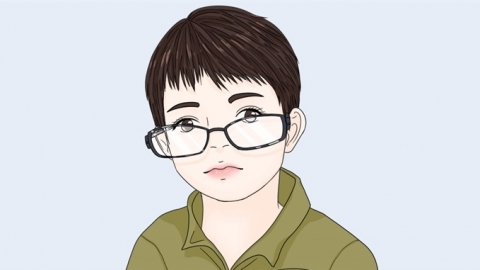What should be done about astigmatism in children?
In general, astigmatism in children may be caused by irregular corneal development, mild lens abnormalities, blepharitis, keratitis, corneal scarring, and other factors. It is recommended to seek medical attention promptly, identify the underlying cause, and improve symptoms through general management, medication, or surgical treatment as appropriate. Specific analyses are as follows:

1. Irregular corneal development: Some children are born with asymmetrical corneal shape, which prevents light from focusing properly within the eye, resulting in astigmatism. Regular refraction exams are necessary, and corrective eyeglasses should be worn based on the degree of astigmatism. Follow-up examinations every 3–6 months are recommended to prevent astigmatism from interfering with visual development.
2. Mild lens abnormalities: Uneven lens density due to congenital factors can disrupt the focusing of light, leading to astigmatism. Limit close-up visual tasks—screen time should not exceed 15 minutes at a time, and total daily screen exposure should be kept under one hour. Encourage outdoor activities such as gazing at distant greenery.
3. Blepharitis: Bacterial infection along the eyelid margins causes inflammation that may lead to corneal distortion and subsequent astigmatism, often accompanied by symptoms like itching and excessive tearing. Cleanse the eyelids daily with warm water to remove crusts, and use medications such as erythromycin eye ointment, chlortetracycline hydrochloride eye ointment, or tobramycin eye drops as directed by a physician. Recheck astigmatism levels after inflammation resolves.
4. Keratitis: Inflammation of the cornea caused by viral or bacterial infections alters corneal shape and may result in astigmatism, along with symptoms such as eye pain and photophobia. Treatments may include medications prescribed by a doctor, such as methylprednisolone tablets, acyclovir eye drops, or ganciclovir ophthalmic gel.
5. Corneal scarring: Scars formed after corneal injury or inflammatory healing can affect refractive function and manifest as astigmatism. Mild cases may be corrected with rigid gas-permeable contact lenses; severe cases may require corneal transplantation. Long-term follow-up for vision changes is necessary after surgery.
In daily life, avoid letting children rub their eyes with dirty hands to reduce the risk of eye infections. Maintain a reading distance of about 33 cm and ensure adequate lighting. Regular vision screenings should be conducted for children so that problems can be detected and addressed early, supporting healthy visual development.









